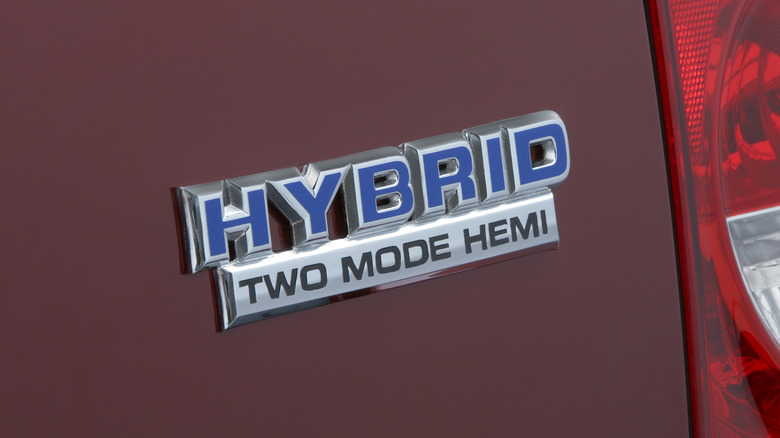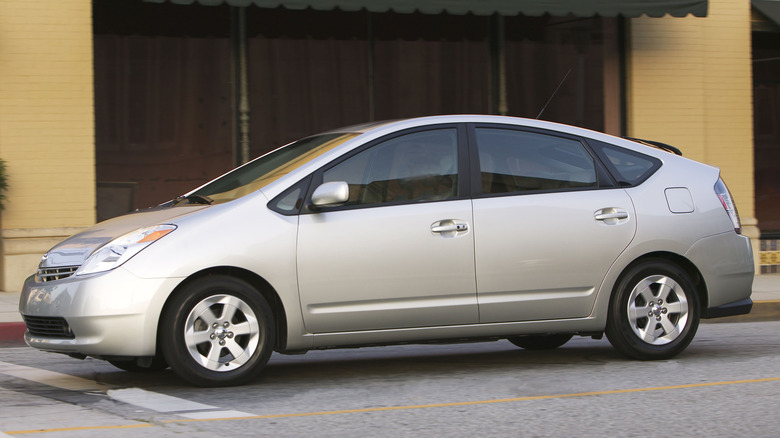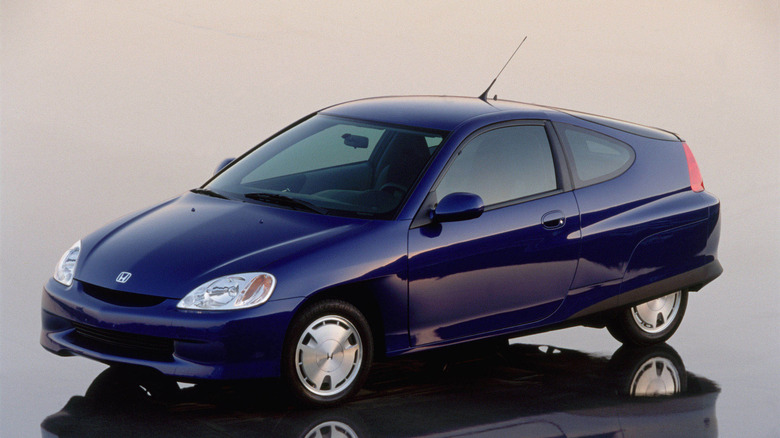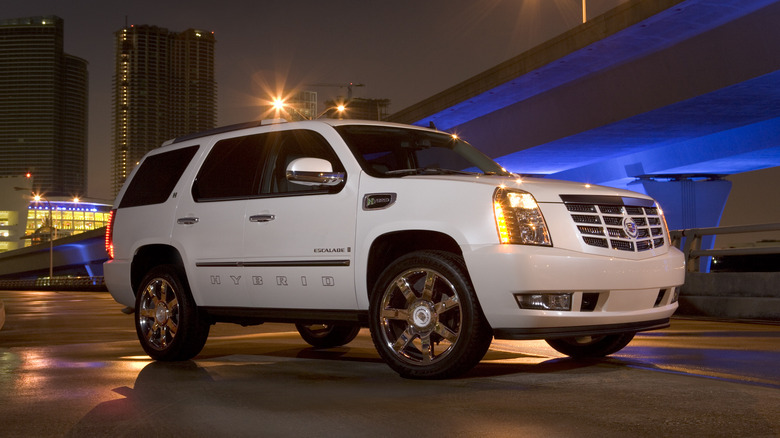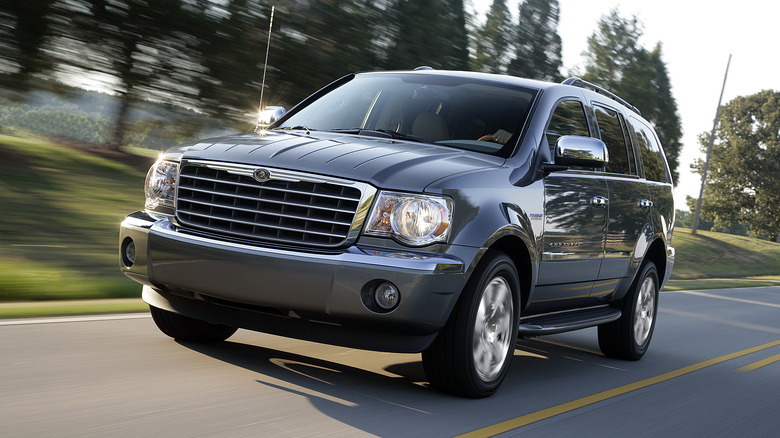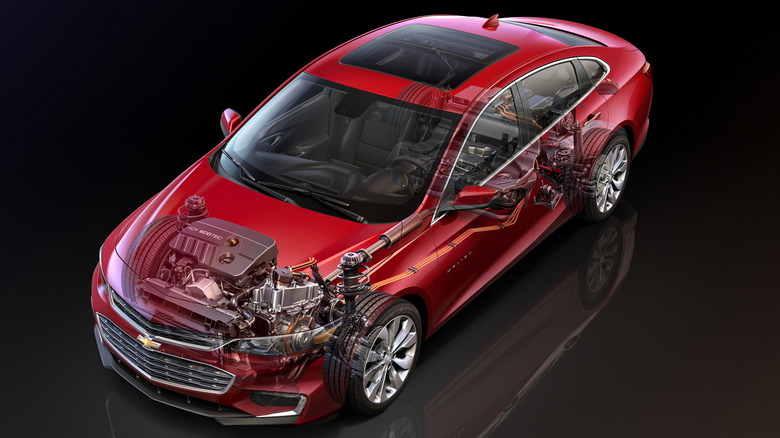5 Hybrid Cars People Loved To Hate (That Were Actually Great)
Prior to the technology's ubiquity today, hybrids had a bad reputation, almost solely due to self-proclaimed gearheads and others complaining that your average hybrid was really slow and entirely soulless to drive and own. Hybrid detractors are mostly missing the point entirely. Your average Prius isn't meant to break speed records or even be that interesting to drive. It's meant to achieve stellar fuel economy and almost nothing else, and it excels at its given job. Very few cars can say that.
Nowadays, in 2023, everything from supercars to trucks have a hybrid drivetrain and no one really gives it a second thought. But in past years, a few hybrids have left the production lines of their respective manufacturers with more jeers than cheers. That's mostly a shame, because at best the cars are just misunderstood and at worst, the car gets an unjust reputation which is often very hard to shake. There are some hybrids that people really loved to make fun of, entirely because of the "HYBRID" badge and not based on the actual merits of the car.
2nd generation Toyota Prius
The simultaneous king of hybrids and king of undeserved hatred is the second-generation Toyota Prius. The first Prius was mostly an experiment, but the second iteration exploded in popularity, becoming an instant automotive icon. With this success came a wave of automotive enthusiasts who thought it heralded the end of fun cars forever. That crowd was not only fantastically, empirically wrong, but they missed out on a piece of car history.
Granted, the second-generation Prius isn't fast, but you could get well over 40 miles per gallon no matter how you drove it. Plus, backed with Toyota's rock-solid dependability, it remains a great used car nearly two decades after it first debuted. With the second generation, the Prius became one of the most important cars ever produced, right up there with the Porsche 911, Ford Mustang, F-150, or Volkswagen Beetle.
It's hard to overstate how influential the Prius was. Hybrid technology suddenly went from a niche oddity to commonplace almost overnight. Hybridization is now commonplace for many automakers, and a large portion of Toyota's lineup comes with a hybrid drivetrain as standard.
1st generation Honda Insight
There's no getting around it. The first-generation Honda Insight is outright funky looking. It has almost microscopic wheels, skirts over the rear wheels, and a bizarre silhouette. Unless it was entering a Blade Runner car lookalike contest, the Insight isn't going to win any styling contests. However, the looks should not deceive you. Underneath the wackiness is a thoroughly competent gas sipper engineered by the incredible minds at Honda. However, according to reviews from 2000, the first model year, it wasn't particularly comfortable to drive.
The specs are strange when listed out on paper. It has a three-cylinder 995 cc engine, paired with an electric motor. At full tilt, it produces a thundering 73 horsepower. Yet it can achieve upwards of 70 miles per gallon, according to Honda.
It's not just the fact that the Insight had incredible fuel economy; it also paved the way for other Honda hybrids, including the Civic. In a press release from 2000, Honda said: "Honda's hybrid Civic announcement comes on the heels of the success of the hybrid Insight, which by far exceeded initial expectations..." Successful hybrids don't happen in a vacuum in the automotive industry. The cars have the potential to change entire product lineups.
Cadillac Escalade Hybrid
General Motors unveiled what would be the first huge hybrid SUV for the 2009 model year with the Cadillac Escalade Hybrid. On the outside, it weighed 6,161 pounds for the four-wheel-drive version, cost $110,063 (adjusted for inflation), and had less overall oomph in the towing department than a regular Escalade. It weighed more than two cars put together and cost more than four.
Its drivetrain consisted of two electric motors and a 6-liter V8 that made a combined 332 horsepower. It could also deactivate cylinders to save fuel when needed. This all translates to roughly 20 miles per gallon on the highway. That's firmly in the "not great" category today, but bleeding-edge way back in 2009. Comparatively, a regular gas-powered Escalade from the era could only eek out 12 miles per gallon. Eight extra miles per gallon through the assistance of a couple of tiny electric motors, and a battery was practically black magic in huge American SUVs from the era. The Escalade was incredibly progressive for its time and it probably didn't even know it.
Chrysler Aspen Hybrid
In a similar vein to the Escalade Hybrid, Chrysler (now Stellantis) decided to up the environmentally friendly ante with its own whale of a hybridized SUV, the 2009 Chrysler Aspen Hybrid. The Chrysler Aspen of the mid-to-late 2000s was little more than a luxury version of the Dodge Durango from the same era. It was all the huge and expensive American SUV you could ever hope for, complete with DVD players and leather seats. In 2009, Chrysler decided to offer both the Aspen and Durango with a hybrid drivetrain. Additionally, the engine could "shut off" certain cylinders to run more efficiently when needed, like the aforementioned Escalade. At release, it was derided by reviewers for being incredibly heavy at 5,637 pounds (modern EV SUVs have no issue at all completely eclipsing that weight). It also wasn't much more in the performance department than its fully gas-powered siblings. With two electric motors, it made a substantial 385 horsepower.
However, Chrysler managed to squeeze 40% more miles per gallon in the city compared to base model versions. Granted, that was only 20 miles per gallon. But 40% isn't anything to scoff at. Suddenly you had a large and comfortable SUV that was at least somewhat better on gas than competing barges of the same heft. Chrysler worked a little bit of its techno-magic and innovated where it was actually needed.
Chevrolet Malibu Hybrid
The most recent iteration of the Chevy Malibu is exactly an adequate car. It carries with it all the good things that GM can bring, like a relatively good value, a long wheelbase, and halfway decent power. It carries all of the bad as well, like mediocre interior plastics and base trims that only carry marginally more equipment than a horse. You couldn't accurately describe the car as "exciting" in any real way unless you were comparing it to a golf cart. Still, it's not a bad car by any means, just lacking any real emotion. It's destined to stay in rental fleets until the Sun burns out.
However, the hybrid version of the Malibu is something else entirely. "There's a hybrid version?" you may ask. Seemingly forgotten by contemporary automotive scholars, archeological evidence says that Chevy offered a hybrid version of the Malibu from 2016 to 2019. The drivetrain consisted of a single electric motor and a 1.8-liter four-banger. It generated 182 horsepower and a fairly stout 277 pound-feet of torque. That's precisely average in the power department.
However, what's not average is the fuel economy. According to estimates from the U.S. Department of Energy, the 2016 Chevy Malibu Hybrid achieves 46 combined miles per gallon. The 1.5-liter turbocharged four-cylinder base model Malibu, without the help of extra electrons, only provides 30 combined miles per gallon. Sixteen extra miles per gallon might be worth the banality of the Malibu.
